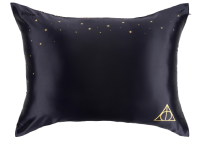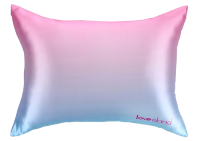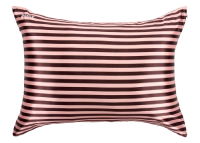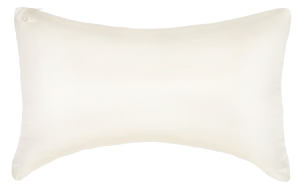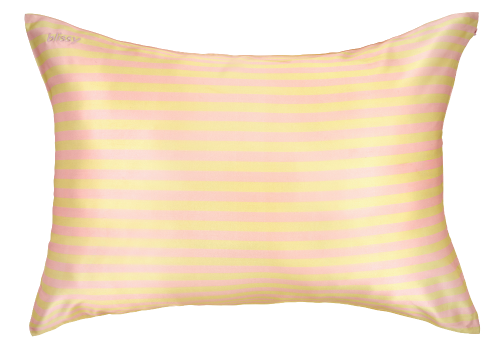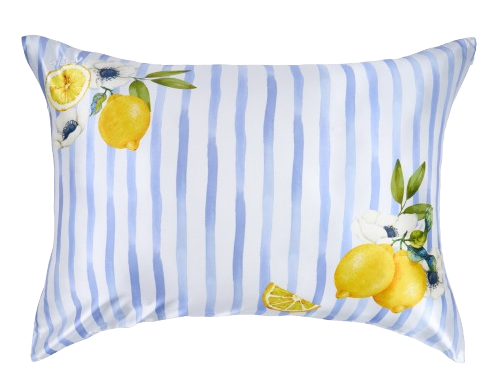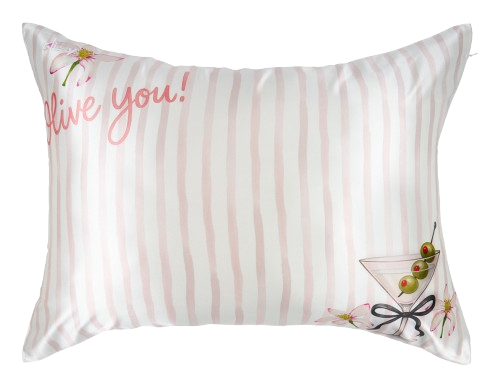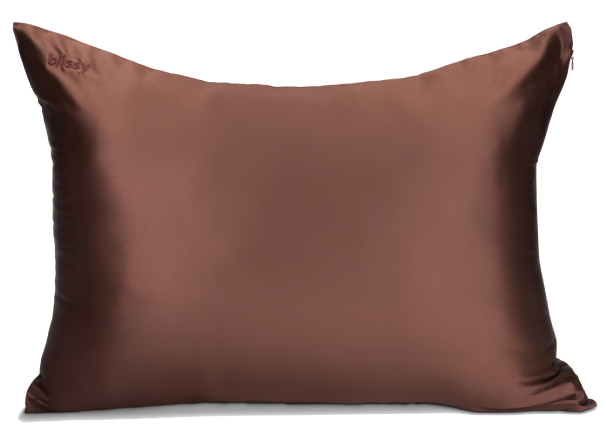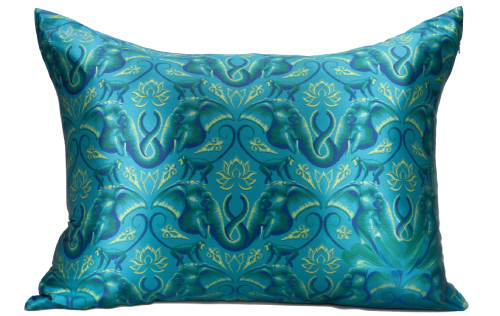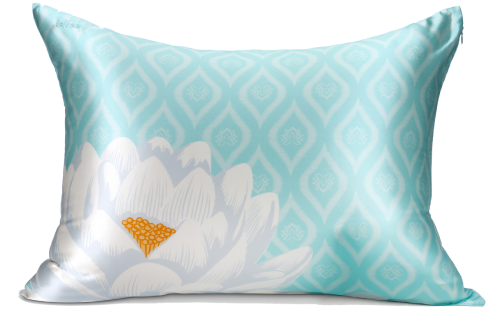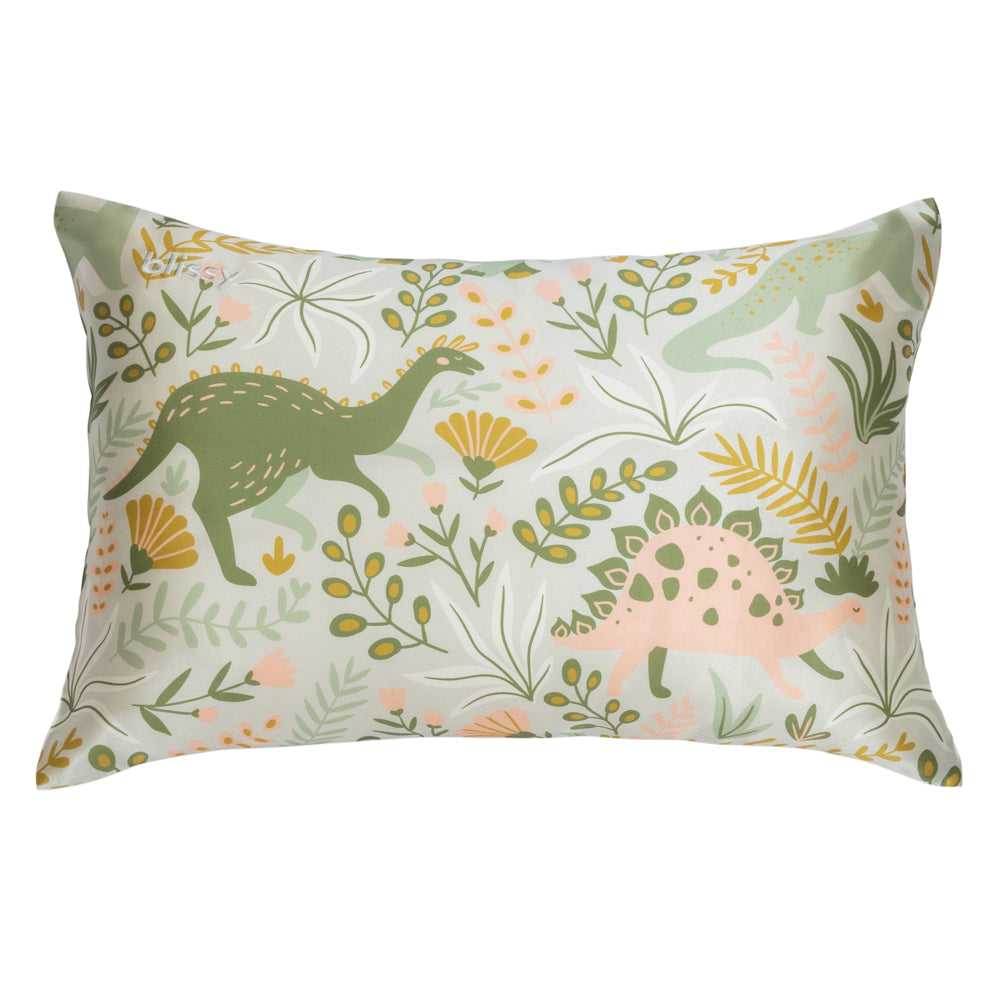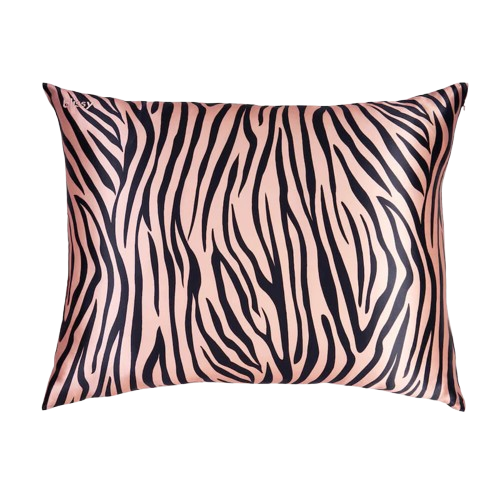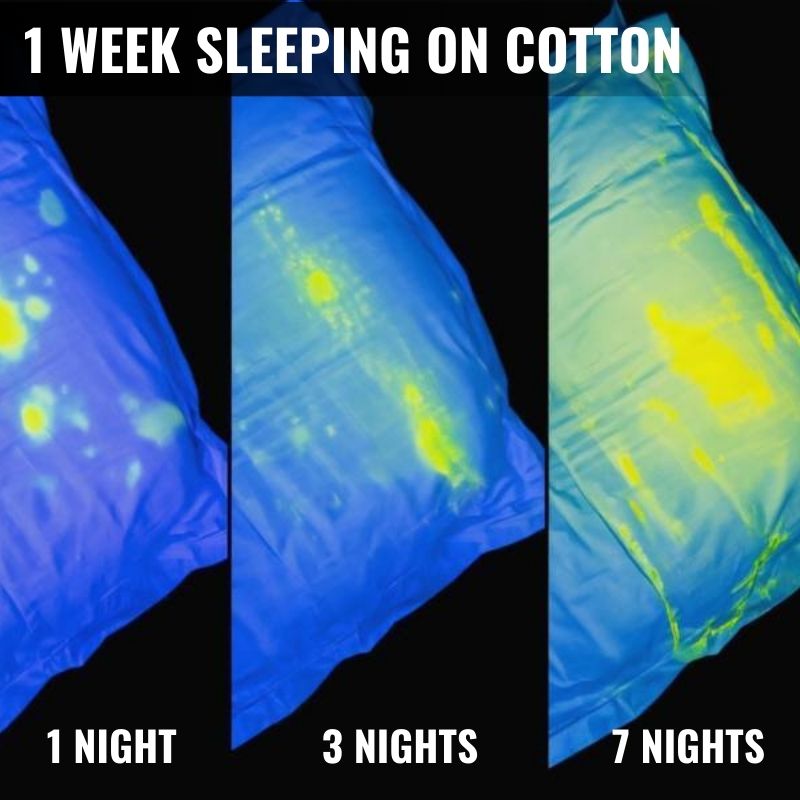Key Takeaways:
-
Silk is a natural fiber; satin is a weave often made from synthetic materials.
-
Silk pillowcases reduce friction, lock in moisture, and improve hair and skin health.
-
Satin is more affordable but lacks silk’s breathability and long-term benefits.
-
Clinical studies and dermatologists confirm silk’s superior performance for beauty sleep.
What TikTok Gets Wrong About Silk and Satin Pillowcases
Have you watched a few or more videos on pillowcases for healthier hair? TikTok influencers have a lot to say about this topic—but the info they provide may not be as helpful as you think.
While silk and satin pillowcases have some things in common, claims about how they boost hair health don't necessarily apply to both materials.

The Viral Beauty Sleep Trend That’s Making Waves
TikTok often treats silk and satin as interchangeable, mainly based on appearance. They're both shiny and have a luxurious feel, so it's easy for viewers to assume they're the same or similar. That's not the case, though.
Silk's a natural fiber that offers some great benefits for hair and skin health. Satin sometimes contains silk—but not always.
Why Visual Appeal Doesn’t Equal Real Benefits
Satin is a weave, and its performance varies depending on material quality (e.g., synthetic vs. natural). Some satin products are made with silk, while others are made of polyester, rayon, or other synthetic materials. These manmade fabrics don't have the same qualities that make natural fabrics and fibers superior for healthy hair.
What’s the Difference Between Silk and Satin Pillowcases?
Let's look past the shine and smoothness to see how these pillowcase materials really compare!

Silk vs. Satin: What Are They Really Made Of?
Silk is a natural protein fiber made by silkworms (especially mulberry silk, the highest grade). A 2022 review explains that the Bombyx mori silkworm naturally produces mulberry silk. Other species produce different types of silk.
Satin is a weave and can be made from polyester, rayon, or silk. A 2025 satin manufacturing report states that satin used to be woven primarily from silk to create luxury items, but the use of polyester, rayon, and other synthetic materials has made it more accessible.
Did You Know?
Most satin pillowcases are synthetic and cost less to produce.
These synthetic materials make satin pillowcases more affordable for consumers and easier to make on a larger scale compared to silk. That's why you can easily find tons of satin pillowcases at lower prices compared to silk.
Silk vs. Satin for Hair: A Scientific Comparison
Should you believe the hype on TikTok? For a more accurate understanding of these pillowcase materials and potential hair benefits, it's better to rely on the experts. That's why we're going to take a deep dive into the science behind satin and silk.
What Are the Pros and Cons of Satin vs Silk Pillowcases?
Silk is breathable, less absorbent, and better at moisture retention—supporting long-term hair health. In fact, a 2020 study mentions silk's hydrating and breathable properties. This natural fabric helps keep hair from drying out and frizzing up and also reduces hair breakage. The result is shinier, healthier hair.
Satin pillowcases feel smooth but can trap heat and moisture, leading to potential hair and skin issues. Don't let the slippery texture fool you. Satin doesn't reduce friction as much as silk, causing it to tug at hair follicles. Satin made with synthetic fibers can also expose your hair to more heat, rather than cooling it off—leading to an increased chance of frizziness.
Did You Know?
Silk offers lasting benefits; satin is more of a budget-friendly upgrade from cotton.
Satin might be easier on your wallet and better for your hair than cotton, but you won't get the same advantages for hair health that you do with silk. Having silk pillowcases is a smart, long-term investment for your hair!
Silk vs. Satin for Hair: Comparison Chart
|
|
Silk |
Satin |
|
Cost |
Higher due to quality |
Typically costs less than silk |
|
Friction |
Smooth, friction-free surface |
Minimizes some friction |
|
Material Quality |
Superior |
Varies based on weave (silk weave is higher quality vs. synthetic weave) |
|
Durability |
Strong and long-lasting |
Not as durable due to use of synthetic fabrics |
|
Moisture Retention |
Yes |
Limited due to synthetic materials |
|
Hair Type Compatibility |
All, especially textured or curly hair |
All, but benefits are more limited |
|
Beauty Sleep Benefits |
Reduced friction, breathable fabric, moisture-wicking, hydrating |
Less absorbent than cotton and other materials, some reduced friction, limited breathability |
Does Silk or Satin Make You Hot?
Silk helps regulate body temperature and supports beauty sleep through its breathability. If you've ever tossed and turned from being too hot trying to sleep, there's a scientific basis for that. a 2019 study explores the connection between sleep quality and body temperature. The bottom line is that you need to feel cool enough to get a good night's rest—and silk helps you do that.
Satin pillowcases can trap heat and moisture, making them less breathable—especially for sensitive hair types or sensitive skin. Unlike silk, satin doesn't help much when it comes to maintaining a comfortable body temperature while sleeping. Its reduced breathability compared to silk can also put skin and hair at risk of becoming dull, dry, irritated, or frizzy.
Quick Tip!
Rest your head on a silk pillowcase to prevent overheating and stay comfortable and cool throughout the night!
Silk's ability to regulate body temperature and its breathability lead to a more pleasant and restful night's sleep.
Why Mulberry Silk Pillowcases Are Better for Long-Term Hair Health

Mulberry Silk Helps Hair Retain Moisture
Mulberry silk contains natural proteins that nourish the hair. This hydrating effect, which helps retain moisture, comes primarily from sericin, a silk protein, as noted in a 2016 study.
By sleeping on mulberry silk pillowcases, you reduce the risk of dryness and hair breakage, helping your hair stay soft, smooth, and strong over time.
Reduced Friction Protects Hair from Breakage and Frizz
In addition to moisture retention, mulberry silk pillowcases reduce friction. This means your hair strands glide smoothly across the surface without tugging, pulling, or tangling.
The result? Fewer split ends, less frizz, and better hair health overall—especially for textured or easily damaged hair types.
Hypoallergenic Benefits for Sensitive Skin and Scalp
Mulberry silk is also naturally hypoallergenic, making it gentler on your skin and scalp than materials made from synthetic fibers. Silk doesn't trap dust mites or allergens the way other fabrics can, helping to reduce skin irritation and flare-ups.
If you have sensitive skin, switching to real silk can lead to fewer overnight reactions and calmer, more comfortable mornings.
Further Reading:
Satin vs Silk Pillowcase Comparison Chart

Quick-Glance Differences: Satin and Silk Pillowcases
Silk (especially mulberry silk) tends to outperform satin pillowcases in almost every category except affordability. While it's true that satin is cheaper to produce and less expensive for consumers, it doesn't compare to silk for skin and hair health or better sleep quality. Let's take a quick look at just how different satin and silk pillowcases are, so you can see why one is the better choice for your bedroom!
|
|
Silk |
Satin |
|
Material Quality |
Superior |
Varies |
|
Durability |
Highly durable |
Less durable |
|
Breathability |
Yes |
Less breathable |
|
Moisture Absorption |
No, retains moisture |
Yes, but less absorbent than cotton and other materials |
|
Beauty Sleep Benefits |
Reduced friction, breathable fabric, moisture-wicking, hydrating |
Some reduced friction, limited breathability |
|
Hair Health Outcomes |
Reduced breakage, increased hydration, less frizz, healthier shine |
May reduce breakage and frizz |
When Satin Pillowcases Might Be Okay
Do you always have to avoid getting satin? Not necessarily, but this really depends on a couple of important factors, like hair and skin types.

Can Satin's Material Quality Still Help with Hair and Skin?
Satin pillowcases can reduce friction compared to cotton, which helps minimize frizz and hair breakage. The smooth fabric of a satin pillowcase doesn’t pull on your hair strands like rougher materials. Unlike cotton, which can tug on your hair follicles and absorb moisture, satin provides a gentler surface that may help protect hair and skin overnight.
The Downside of Low-Quality Satin Pillowcases
Not all satin offers the same benefits. Many satin pillowcases tend to be made with synthetic materials like polyester or acetate. These fabrics don’t breathe well and may:
-
Absorb your hair’s natural oils, leading to dryness
-
Trap heat and contribute to night sweats
-
Irritate sensitive skin, especially in warmer climates
-
Wear out quickly, reducing durability over time
Satin Made from Silk vs. Synthetic Satin
Satin produced using real silk, such as mulberry silk, combines the benefits of a satin weave with those of a natural protein fiber produced by silkworm cocoons. This version is closer to silk pillowcase benefits, offering more breathability, temperature regulation, and moisture retention than its synthetic counterparts.
What About Satin Hair Accessories?
For items like scrunchies, bonnets, or scarves, satin may still be useful—depending on your hair type and the material quality. If the satin is made from silk or features a silk weave, it can be gentler on hair than cotton or other synthetic materials. However, if you have curly or textured hair, switching to pure silk accessories may offer better protection against frizz, dryness, and long-term hair damage.




